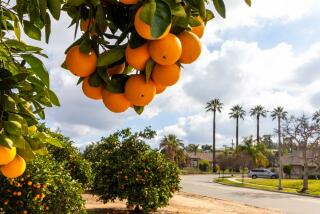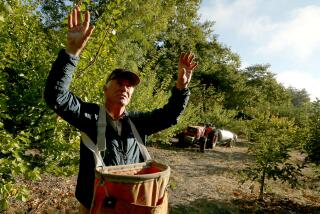Cherimoyas: How to choose, store and prepare

Cherimoyas: That’s not a hand grenade, it’s a cherimoya. This warty green fruit may not look like something you’d want to eat, but its rough exterior hides a heart that’s pure custard. (In fact, one common nickname is the custard apple.) Cherimoyas are a tropical fruit, though they have a long history in California. They were first planted here in 1871, according to the California Rare Fruit Growers association. The flavor of the fruit reveals its heritage, for it is very sweet and wildly fragrant with a kind of tropical tutti-frutti appeal.
How to choose: Cherimoyas don’t look very promising: The green skin is usually pretty dingy rather than bright, and there are often dark stains. (Really overripe fruit will be quite dark.) To choose a ripe one, squeeze it gently in the palm of your hand. (Don’t use your fingers, they’ll bruise the fruit!) When ripe, cherimoyas give to gentle pressure, similar to a pear or an avocado.
How to store: Cherimoyas are a tropical fruit, so they are very susceptible to chill damage if they get too cold. They are best stored at 55 degrees or warmer. But if you need to keep them for more than a day or two, you should refrigerate to keep from spoiling.
How to prepare: The best way to enjoy a really ripe cherimoya is also the easiest: Spoon out the fruit, discard the large black seeds and season the pulp with a squeeze of orange juice.
More to Read
Sign up for our L.A. Times Plants newsletter
At the start of each month, get a roundup of upcoming plant-related activities and events in Southern California, along with links to tips and articles you may have missed.
You may occasionally receive promotional content from the Los Angeles Times.






